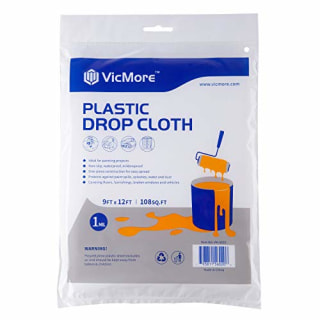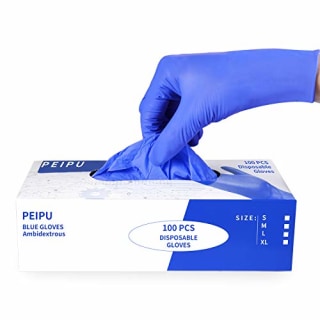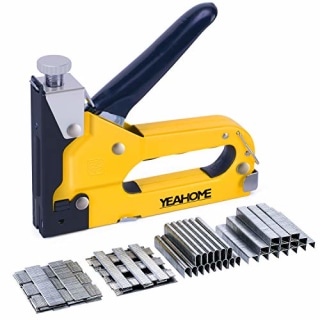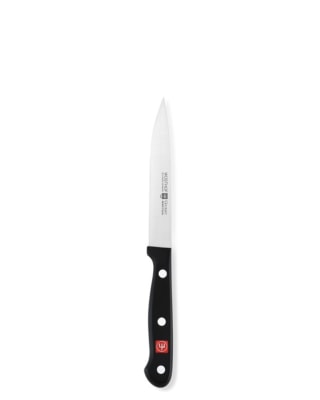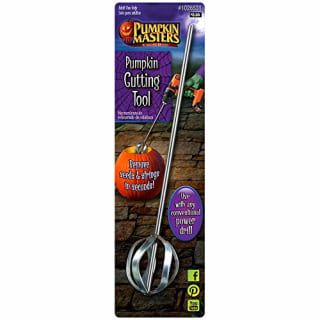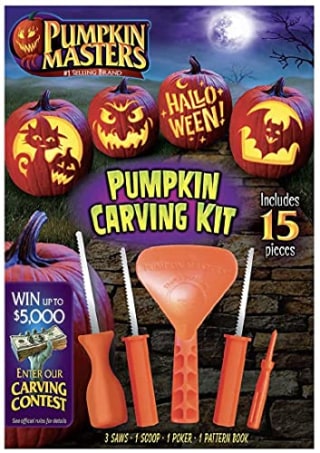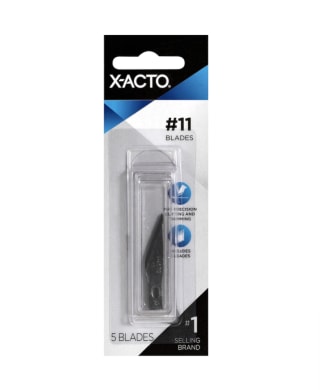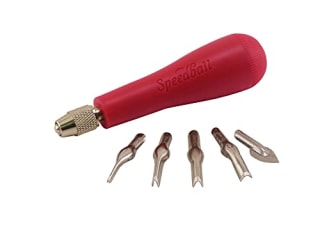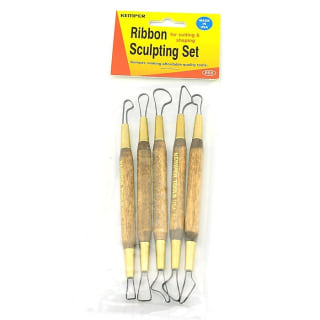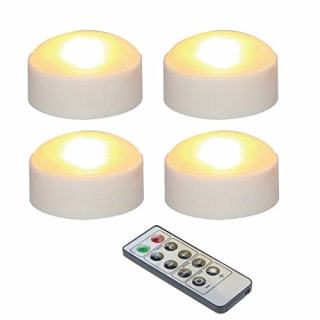The transition from summer to fall is always bittersweet. Dropping temperatures and cascading foliage mark a return to school for many, but they also indicate the start of a new season of apple picking, scary movies and a lot of candy. For some, a major highlight during these months is pumpkin carving — the activity itself is a fun bonding experience with family and friends, and the final product can serve as a festive fall decoration for weeks or even months, as long as you preserve it correctly. Pumpkin carving can be dangerous if it’s not done properly, though. The process involves several knives and sharp objects — in 2017, it was responsible for nearly 3,200 of the 16,706 Halloween-related injuries in U.S. emergency rooms, according to the Consumer Product Safety Commission. To help you enjoy the season safely, we spoke to professional pumpkin carvers about their own pumpkin-carving processes, plus got their carving tool recommendations and used their advice to round up other top-rated carving accessories like knives, staple guns and LED lights.
How to carve a pumpkin
Whether you want to sculpt your pumpkin to look like Jack Skellington or a spider crawling in its web, the pumpkin-carving process remains virtually the same. Below, we broke everything down step by step, all according to guidance the carving experts gave us.
1. Pick the right pumpkin
When it comes to picking the best pumpkin, pay attention to the stem, said Jon Neill, a special effects artist and professional pumpkin carver. The best pumpkins for carving are healthy and freshly harvested from the vine, he noted, and a sure way to distinguish the older pumpkins from the newer ones is through the stem.
“If the stem is all shriveled up, then it’s an older pumpkin or it’s been cut and sitting in the sun [for] a long time,” he explained. Neill prefers to go directly to a farm that grows pumpkins and buy them right when they’re harvested — if the pumpkins have already been cut, look for ones with “long, green stems” that are sitting in the shade rather than in direct sunlight, where they’ll likely shrivel up.
Beginners might not wanna go with the thickest pumpkin ‘cause it may be frustrating
Marc Evan, co-founder of Maniac Pumpkin Carvers
The shape and thickness of the pumpkin matter, too. Neill, who won season 4 of Food Network’s “Halloween Wars” with his intricate pumpkin displays, said the best pumpkins for carving are Wolf pumpkins and Howden pumpkins. He personally prefers “thick-skinned pumpkins” so he can carve more intricate designs and manipulate the interior walls. For less detailed jack-o’-lantern-style pumpkins, he recommended “lighter” ones with “thinner thickness of the skin.” A good rule of thumb, he said, is that “the thickness of the stem equals the thickness of the skin.”
Marc Evan, co-founder of Maniac Pumpkin Carvers, also prefers to use thicker pumpkins when he’s carving more detailed designs. Thinner pumpkins, he explained, are harder to manipulate, and light often ends up shining through them where he doesn’t want it to. However, for beginners working with simpler designs, he said pumpkins with thinner skins might be preferable since it takes less effort to carve them up. “[Beginners] might not wanna go with the thickest pumpkin ‘cause it may be frustrating,” he noted.
2. Prepare your workstation
Pumpkin carving can get very, very messy. Before you so much as yield a knife, you should prepare your workstation so that it will be easier to clean up when your carving is complete. Neill suggested lining the floor with old newspapers, if you have any. “Whatever you have [that’s] easiest” will work,” he said. Once you get around to the gutting process, you can just drop them right onto the floor for easy cleanup later on.
VICMORE Plastic Drop Cloth
Alternatively, Neill said a plastic drop cloth works, too. This highly rated one is 9 feet by 12 feet to cover plenty of floor area and can be recycled when you’re done.
PEIPU Nitrile and Vinyl Blend Material Disposable Gloves
During the “slippery” parts of the process — namely, the removal of the pumpkin pulp — Neill said it’s safer to wear a pair of gloves. He likes to wear nitrile gloves or rubber gloves while he carves because he doesn’t want his hand to accidentally slip on the blade. “You have to be careful — a lot of injuries can happen in just the first few minutes,” he warned.
These latex-free nitrile and vinyl blend gloves give your hands a firm grip, according to the brand. They come in a pack of 100 and you can choose from Small, Medium, Large and X-Large sizes.
3. Cut a lid (ideally not from the top)
In order to access the inside of the pumpkin, you will need to cut a lid into it that’s large enough to fit your hand and any tools you might be using. According to Neill, the lid should be at least 5 inches in diameter, but you can go even bigger if you need more space to work.
Evan also noted it’s important to make sure the lid comes out in one piece — when carving it out, he recommended passing the knife through the corners a few extra times. “Sometimes it looks like you made the cut all the way around but on the inside, the thickest parts of the pumpkin are still attached,” he warned.
Though people traditionally cut into the top of the pumpkin near the stem, Neill advises against doing this. “If you cut the top off the pumpkin, they don’t last long at all,” he explained. “They will dry up.” Some people will cut from the bottom as well but, according to Evan, this can cause the pumpkin to dry out faster and leak everywhere. “If you open it from the bottom, pumpkins give off so much moisture,” he noted.
YEAHOME Upholstery Staple Gun
Both experts recommend cutting into the back bottom of the pumpkin. When Neill cuts into the back of the pumpkin, he usually makes an angled square cut “so it won’t fall in” and uses toothpicks to keep the wedge in place when he’s done carving. Evan uses either a staple gun or push pins to secure the rectangular wedge once he’s done cleaning and carving his pumpkin. If you’re amenable to the staple gun option, this one from YEAHOME can handle four types of staples and can be used for various types of projects, including upholstery and crafting.
Wüsthof Gourmet Utility Knife
For the lid-carving process, a kitchen knife should suffice. However, Neill said you shouldn’t use a knife with a blade longer than 5 or 6 inches. “I want to be able to stay in control of it,” he explained. This knife from Wüsthof is compact at just 4-and-a-half inches long and can be used in the kitchen for slicing and peeling after you’re done carving.
4. Scoop out the pumpkin’s innards
If the area where you’re doing your carving is properly prepared, you don’t have to worry about making a mess when you scoop the innards out of your pumpkin. In fact, Neill recommended just dropping them right on the floor and dealing with the mess once you’re done.
Pumpkin Masters Cutting Tool
For the actual gut removal process, Neill said you can wield several common household items, including a ladle, a “very, very large spoon” and an old CD (his personal preference). If you are serious about your fall activities, he also said that Pumpkin Masters’ gutting tool “works fairly well” and is relatively solid.
Hyde & EEK! 9-Tool Pumpkin Carving Kit
Evan also likes the smooth scoopers that come in most Halloween carving kits. He specifically prefers smooth scoopers over the ones with jagged edges since he purposefully manipulates the thickness of the pumpkin walls, and a serrated edge can get in the way of that. Just make sure to remove all of the guts: According to Evan, those stringy innards “help degrade the pumpkin quicker.”
5. Outline and carve your design
Before you make modifications to your pumpkin, outline your design on its surface so any mistakes aren’t permanent. Neill likes to do this part of the process with a Sharpie, and when he’s done with his design, he’ll wipe off any visible marker with rubbing alcohol and a cotton ball. Evan said a regular ballpoint pen also works, and this should wash off your pumpkin easily with a simple kitchen sponge.
Pumpkin Masters Pumpkin Carving Kit
Once your design is to your liking, it’s time to cut. Though a serrated knife will saw through the skin of the pumpkin, Neill said a carving kit is a fun alternative if you’re just looking to have some fun or you want to make pumpkin carving a family activity. If you do go this route, he suggests buying two kits, just in case some of the tools from the first kit break — most of the tools in these kits are made of plastic, so they’re not as durable as metal artisan tools. This one from Pumpkin Masters comes with several useful tools, including three saws, a scoop, a poker, and a pattern book.
X-ACTO #11 Classic Blades
For a more involved carving, Neill likes to use an X-ACTO knife with a #11 blade. According to Neill, you should cut no more than one-sixteenth of an inch for more intricate designs.
Speedball Linoleum Cutter
When handling small details and carvings, Neill suggests using the Speedball Linoleum Cutter, which comes with five different carving tips. Evan, whose company specializes in etched pumpkin designs, said that if you want to experiment with etching, you can also add some details to your traditional Jack-o’-lantern to play around with words and monograms. He suggested carving no deeper than one-fourth of an inch thick to start — you can always cut deeper if need be, but you can’t replace parts of the pumpkin once they’ve been removed. For this more delicate process, he recommended using art tools like a clay loop tool or the aforementioned linoleum cutter.
6. Thin the inner and outer walls of the pumpkin
This is an optional step in the pumpkin-carving process. However, it can add depth and design to your pumpkin if you plan on illuminating it with a candle or flashlight.
“If you’re carving a pattern or a photo-type carving, you want to take a flat ribbon loop tool (a pottery tool) … and you can basically carve away at the inside to make it thinner,” Neill explained. By thinning the inside of the pumpkin only in certain areas, you can manipulate the light and shadows to work with your design. If you design your pumpkin to look like a person’s face, for instance, you can thin the wall where their nose is so it looks more lifelike when your light is on inside the pumpkin. Evan also noted that you can scrape the skin from the outside “wherever you want there to be highlights” and “wherever you want things to be lighter.” If you scrape the outside and it’s still not light enough, you can then try scraping the same area on the inside and continue to thin it down until it’s the right transparency.
Kemper Ribbon Tools Sculpting Set
On the outside of the pumpkin, you can also use a loop tool to scrape the surface where you want the pumpkin to be white. For this process, make sure you are using a loop tool that is flat across the top — both of the carvers we spoke to recommended Kemper for “gold standard” sculpting tools that are “pretty affordable.”
Halloween LED Pumpkin Lights
Though Evan uses especially bright LED lights to shine through the walls of his pumpkins, he said that anyone carving a regular Jack-o’-lantern should be fine using lights designed specifically for that purchase. These lights come in a pack of four and you can use the remote to put them on a timer, dim or brighten them, and turn them on and off.
7. Keep your pumpkin out of the sun
Sunlight and pumpkins do not mesh well, so make sure to put your pumpkin out of direct sunlight. “Keeping it from getting hot and dry is the real answer,” he explained. If your pumpkin does dry out, though, not all hope is lost: Immersing the pumpkin in cold water for a few hours should rehydrate it. However, “that’s not going to help if [your pumpkins] look like French fries,” Neill said.
Krylon Crystal Clear Acrylic Spray
To prevent the buildup of mold, Neill also said you can mist the inside of the pumpkin with bleach cleanup spray, though this will prevent you from composting the pumpkin. You can also rub vaseline or spray crystal clear acrylic spray over your carvings “to seal where you’ve cut” since both materials are moisture-resistant.
Ultimately, Evan said the most important thing to accept is that pumpkin carvings are an “ephemeral art form.” “No matter what you do, it’s unpredictable and perishable,” he noted.
Catch up on the latest from NBC News Shopping guides and recommendations and download the NBC News app for full coverage of the coronavirus outbreak.


